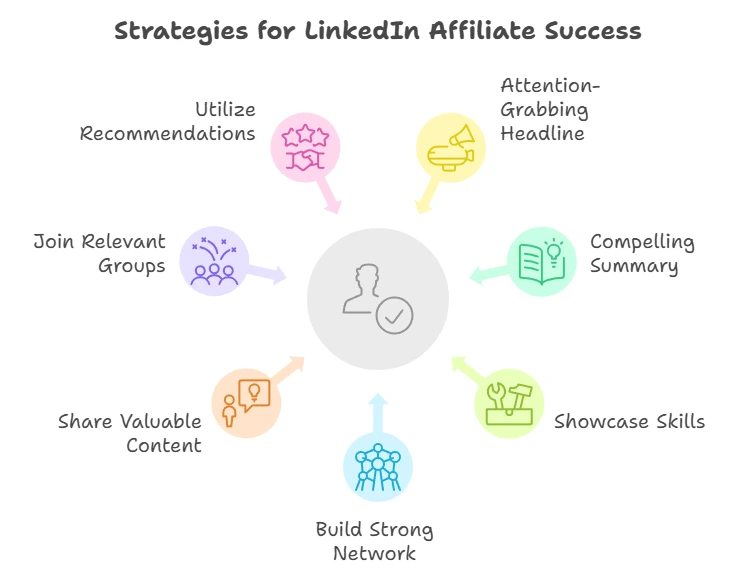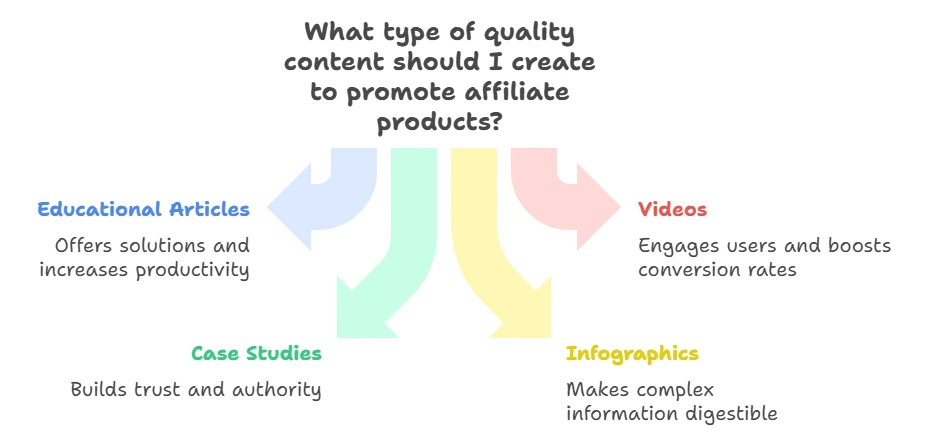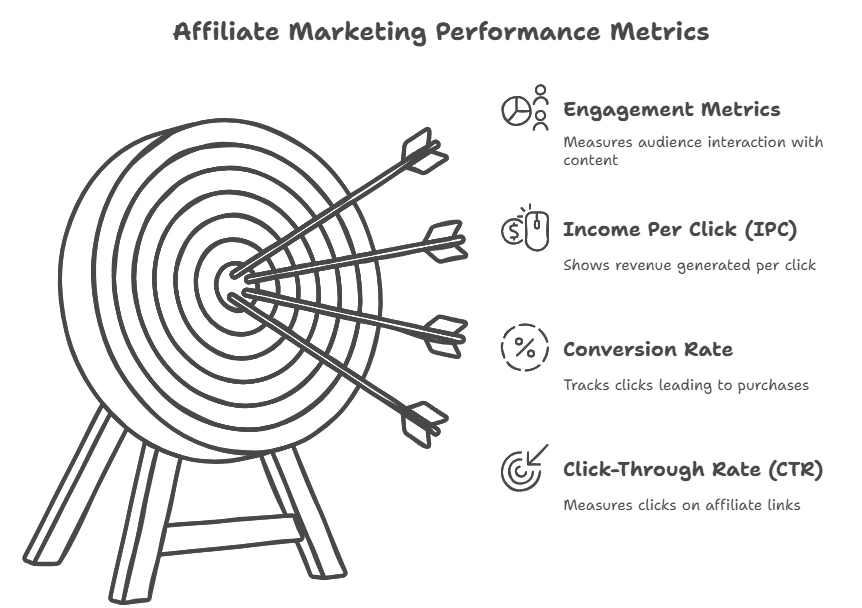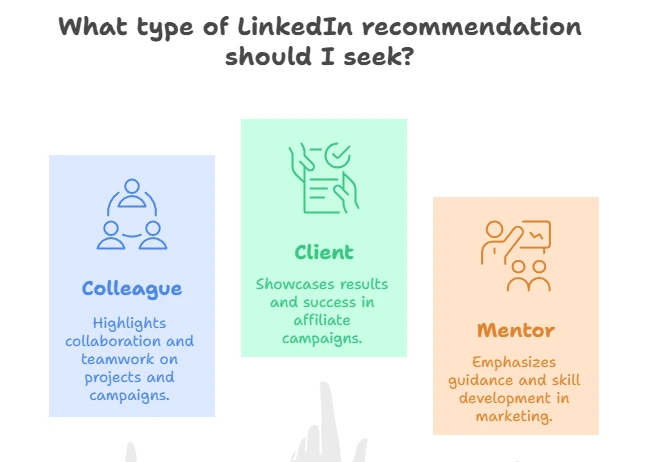
Affiliate marketing on LinkedIn can be a powerful way to earn passive income while leveraging the professional network’s unique features. To make the most of your affiliate marketing journey on LinkedIn, you need to adopt strategic methods that suit the platform. By focusing on creating valuable content, establishing connections, and engaging with your audience, you can build a successful affiliate marketing venture. Here are some effective strategies to help you succeed.
Optimize Your LinkedIn Profile
Your LinkedIn profile is your digital business card. Ensure that it is fully optimized to attract potential partners and clients. Here are key elements to focus on:
- Professional Photo: Use a high-quality photo that reflects your personal brand.
- Compelling Headline: Write a headline that clearly indicates your expertise and the value you offer.
- Summary Section: Craft a strong summary that explains your background and how affiliate marketing integrates into your professional life. Use this space to subtly mention your affiliate links and areas of interest.
Create Valuable Content
Producing high-quality content is central to successful affiliate marketing on LinkedIn. Your audience will trust you if you consistently provide valuable insights. Here are some content ideas:
- Informative Articles: Write articles that educate your audience about topics relevant to your niche. Incorporate affiliate links naturally within the content. For example, if you’re in the tech space, write about the latest tools with affiliate products included.
- Engaging Status Updates: Share updates that spark discussions. Ask questions or provide polls related to your affiliate products.
- Video Content: Create short videos that explain how to use affiliate products. Videos are highly engaging and can attract more views.
Network Strategically
Building connections is key to thriving in affiliate marketing on LinkedIn. Leverage your network by:
- Joining Relevant Groups: Participate in groups related to your niche. Offer advice and connect with members. This helps you position yourself as an expert.
- Engaging with Influencers: Follow and engage with industry leaders. Commenting on their posts can increase your visibility and attract potential partners.
- Sending Personalized Connection Requests: When reaching out to new connections, always customize your requests to explain why you want to connect.
Leverage Analytics
Understanding how your content performs is essential. Use LinkedIn analytics to track engagement metrics. You can assess:
- Which posts are receiving the most engagement.
- The demographics of your audience.
- Click-through rates on your affiliate links.
By analyzing this data, you can refine your strategies. Focus more on what works and redo what isn’t effective.
Utilize LinkedIn Ads
Using LinkedIn Ads can boost your affiliate marketing efforts. While it may involve some financial investment, it can lead to higher returns. LinkedIn Ads can help you target specific audiences based on their job title, industry, and skills, increasing the chances of successful clicks on your affiliate links. Consider:
- Sponsored Content: Promote your article or post with affiliate links to reach a wider audience.
- InMail Campaigns: Send personalized messages directly to potential customers to promote your affiliate offerings.
Follow Compliance Guidelines
LinkedIn has strict policies regarding affiliate marketing. Always disclose your affiliate relationships in your posts. Transparency builds trust and credibility with your audience, which is essential for long-term success. If you need more guidance on compliance, check out resources from Hootsuite or Neil Patel.
Integrating these strategies effectively can position you well in your affiliate marketing journey on LinkedIn. Focus on providing value and building relationships, and you’ll see your efforts pay off over time. As you implement these strategies, remember that success won’t come overnight; patience and consistent effort will lead you to achieve your affiliate marketing goals.
Building an Engaging LinkedIn Profile for Affiliate Success

Creating an engaging LinkedIn profile is essential for anyone looking to succeed in affiliate marketing. Your profile is the first impression you make on potential partners, clients, and even customers. Let’s break down how you can build a standout LinkedIn presence that encourages engagement and drives success in affiliate marketing.
Craft an Attention-Grabbing Headline
Your LinkedIn headline is your digital handshake. It should clearly state who you are and what you do. Instead of merely listing your job title, consider including your expertise in affiliate marketing.
- Include keywords like “affiliate marketer” or “digital marketing expert” to capture your audience.
- Incorporate a value proposition that emphasizes what sets you apart.
Write a Compelling Summary
Your summary is your opportunity to shine. This section should tell your personal story, highlight your achievements, and explain how you can add value to your stakeholders.
- Use first-person language to create a connection.
- Deploy relevant keywords related to affiliate marketing to improve searchability.
- Share your unique selling proposition to entice visitors.
Showcase Your Skills Clearly
LinkedIn allows you to list up to 50 skills. Make sure you leverage this feature to its fullest potential. Select skills that are relevant to affiliate marketing, such as:
- Social Media Marketing
- Search Engine Optimization (SEO)
- Content Creation
- Email Marketing
- Data Analysis
Encourage your connections to endorse these skills, which adds credibility to your profile.
Build a Strong Network
Networking is vital in the world of affiliate marketing. The more connections you have, the wider your reach. Here are some strategies to build your LinkedIn network:
- Connect with fellow affiliate marketers, influencers, and brands.
- Join relevant groups and participate actively to showcase your expertise.
- Engage with posts from others in your industry by liking, commenting, and sharing.
Share Valuable Content Regularly
To position yourself as an expert in affiliate marketing, it’s crucial to share quality content on LinkedIn. Here’s how you can do this effectively:
- Post articles that explain affiliate marketing concepts, tips, and strategies.
- Share case studies showcasing your successes in affiliate marketing.
- Utilize LinkedIn’s publishing feature to write long-form content.
By providing valuable content, you’ll encourage engagement and attract a targeted audience interested in affiliate marketing.
Join Relevant LinkedIn Groups
Groups on LinkedIn can serve as powerful platforms for networking and sharing insights related to affiliate marketing. Consider the following:
- Search for and join groups that align with affiliate marketing or your niche.
- Participate in discussions and offer insights to establish your authority.
- Share your blog posts or affiliate-related tips to gain visibility.
Utilize LinkedIn Recommendations
Recommendations can enhance your credibility. Ask colleagues, clients, or partners for recommendations highlighting your skills in affiliate marketing. This peer validation can make a big difference.
| Type of Recommendation | What to Include |
|---|---|
| Colleague | Collaboration on projects and marketing campaigns |
| Client | Results from affiliate campaigns you’ve managed |
| Mentor | Guidance and skill development in affiliate marketing |
Monitor Your Progress
Regularly assessing your LinkedIn profile’s effectiveness is essential. Use LinkedIn analytics to track how your posts perform and which areas engage your network. This data can inform your strategies and help refine your approach.
Building an engaging LinkedIn profile is not just about showcasing your professional journey—it’s about intertwining it with your affiliate marketing expertise. With the right strategies, you will elevate your affiliate marketing game on LinkedIn. For more information on optimizing your LinkedIn presence, check out LinkedIn’s official guide. By implementing these tips and best practices, you’ll be well on your way to leveraging LinkedIn for affiliate success.
Leveraging LinkedIn Groups to Boost Affiliate Sales
When considering affiliate marketing, LinkedIn presents a unique platform to connect with a professional audience. One of the most effective strategies for promoting affiliate products is by leveraging LinkedIn Groups. These groups can serve as a foundation for building relationships, sharing knowledge, and ultimately boosting sales. Understanding how to engage with these communities can set you apart in the competitive affiliate marketing space.
Why should you focus on LinkedIn Groups? The answer lies in the platform’s demographic. Unlike other social media platforms, LinkedIn is populated mainly by professionals and industry leaders. This unique audience offers tremendous potential for affiliate marketers looking to sell products or services that provide value to these individuals.
Identify Relevant Groups
The first step in leveraging LinkedIn Groups is to identify those that align with your niche. Look for groups where professionals discuss topics relevant to your affiliate products. You can use LinkedIn’s search functionality to find groups by typing keywords related to your market.
- Industry Focus: Look for groups that specifically cater to your target market.
- Engagement Level: Join groups that are active, with regular posts and member interactions.
- Size of Group: A larger group may offer more exposure, but smaller groups often foster a community feeling that can lead to stronger relationships.
Participate Actively
Once you join groups, it’s important to participate actively. Here’s how to maximize your involvement:
- Engage Regularly: Share insights and answer questions to establish yourself as a knowledgeable member.
- Post Valuable Content: Write posts that offer solutions to problems faced by group members. This builds trust and positions you as a resource.
- Share Educational Resources: When appropriate, share blog posts or articles that pertain to your affiliate products without overtly selling.
Utilize Group Polls
LinkedIn allows you to conduct polls within groups. These can be an excellent way to gauge interest in specific products or understand your audience better. Consider the following when creating polls:
- Keep it Simple: Ensure your questions are straightforward and relevant.
- Engage Members: Ask questions that encourage discussion and conversation.
- Use Responses: Leverage poll results to inform your content and marketing strategy.
Share Your Affiliate Links Wisely
While promoting your affiliate products is essential, overly aggressive marketing can backfire. Here’s a strategic approach to sharing affiliate links:
- Be Authentic: Always disclose your affiliate relationship when sharing links.
- Link to Valuable Content: Instead of directly linking to a product, consider sharing a blog post or resource that links to the affiliate product. This adds value and builds trust.
- Engage with Comments: If someone shows interest in a product, respond to their comments and provide additional information.
Network with Influencers
LinkedIn Groups are a great way to connect with potential affiliate partners. Building relationships with group influencers can help market your affiliate products more effectively. Consider these steps:
- Identify Influencers: Look for members who regularly post insightful content and engage others.
- Build Relationships: Comment on their posts and share their content to cultivate a connection.
- Collaborate on Content: Reach out to explore potential collaboration on webinars or joint posts that feature your affiliate products.
Monitor and Analyze Your Efforts
Continuous improvement is key in affiliate marketing. Take time to analyze your engagement and sales from LinkedIn Groups. Use tools like Google Analytics to track referrals from your links and evaluate which strategies yield the best results. Regularly assess your approach and adapt based on what works.
By fully engaging in LinkedIn Groups, you can create valuable interactions that lead to increased affiliate sales. Focus on building relationships, providing value, and strategically sharing your products. For further insights on optimizing your LinkedIn marketing strategies, consider visiting Quora.
Utilizing LinkedIn Groups for affiliate marketing can take time, but with dedication and a people-first approach, you can successfully grow your network and boost your affiliate sales.
Creating Quality Content to Promote Affiliate Products on LinkedIn
Creating quality content is essential for promoting affiliate products on LinkedIn. This professional network is not just about job hunting; it’s a powerful platform for sharing ideas and driving sales. To succeed in affiliate marketing on LinkedIn, you must focus on crafting content that delivers value to your audience while subtly incorporating your affiliate links.
Firstly, identify your target audience on LinkedIn. Understanding who you are writing for is crucial. Are they entrepreneurs, marketers, or industry specialists? Tailor your content to resonate with their interests and needs. For example, if your audience consists of digital marketers, consider writing articles on effective marketing strategies that incorporate your affiliate products.
Types of Quality Content to Consider

When creating content for affiliate marketing, think about various formats:
- Educational Articles: Write insightful articles that offer solutions to common problems your audience faces. For instance, if you’re promoting a marketing tool, share tips on how to increase productivity using that tool.
- Videos: Create short videos demonstrating how to use the affiliate products. Video content engages users and often leads to higher conversion rates.
- Case Studies: Showcase real-life examples of how your affiliate products have helped others. This type of content builds trust and authority.
- Infographics: Visual content, such as infographics, can make complex information digestible and more shareable.
Optimizing Your Content for Engagement
Next, ensure that your posts engage readers. Use an active voice and keep your sentences clear and varied. Break long paragraphs into shorter ones to improve readability. Aim for a tone that speaks directly to your audience, using “you” to create a personal connection.
To boost visibility, include relevant keywords naturally within your content. Phrases like “affiliate marketing on LinkedIn,” “promote affiliate products,” and “best tools for marketers” should appear in your titles, body text, and even in image alt text. This helps your content rank better in searches, making it easier for potential customers to find you.
Effective Call to Actions (CTAs)
Don’t underestimate the power of a strong call to action. After providing valuable content, guide your readers to take a specific action. This could be visiting your affiliate link, signing up for a newsletter, or trying out a product. Use clear and compelling language to encourage your audience to click through. For instance:
- “Try this tool today to see how it transforms your marketing strategy!”
- “Click here to discover special offers on this product!”
Building a Network and Engaging Your Audience
Marketing on LinkedIn isn’t just about posting content; it’s also about building relationships. Engage with your connections by liking and commenting on their posts. This creates a reciprocal relationship where they are more likely to engage with your content in return. Participate in relevant groups to share your content and establish your authority in your niche.
Measure the performance of your content. Use LinkedIn analytics to track views, likes, shares, and comments. Understanding what resonates with your audience allows you to refine your strategy continuously. This cycle of improvement is crucial for long-term success in affiliate marketing.
Useful Resources
For more in-depth information on affiliate marketing strategies, consider visiting:
- HubSpot’s Affiliate Marketing Guide
- Oberlo’s Definitive Guide to Affiliate Marketing
- Neil Patel’s Affiliate Marketing Insights
With the right approach, quality content, and engagement strategies, you can effectively promote affiliate products on LinkedIn, turning connections into conversions.
Analyzing Your Affiliate Marketing Performance on LinkedIn
Measuring and analyzing your affiliate marketing performance on LinkedIn is crucial for increasing your success in this professional network. With over 930 million users, LinkedIn offers a unique opportunity to reach potential buyers through targeted content. To ensure your affiliate marketing strategy on LinkedIn is effective, you must track various metrics and analyze your performance consistently. Here’s how to evaluate your efforts effectively.
Understanding Key Performance Indicators (KPIs)

First, identify the key performance indicators (KPIs) that are relevant to your affiliate marketing goals. Monitoring these KPIs helps you make informed decisions and refine your approach. Common KPIs in affiliate marketing include:
- Click-Through Rate (CTR): Measures the percentage of users who clicked on your affiliate links. A higher CTR indicates effective call-to-actions and engaging content.
- Conversion Rate: Tracks the percentage of clicks leading to an actual purchase. Monitoring this allows you to assess how persuasive your messaging is on LinkedIn.
- Income Per Click (IPC): This metric shows how much revenue you generate for every click on your affiliate link, giving insight into your return on investment.
- Engagement Metrics: Likes, shares, and comments on your posts indicate how well your content resonates with your audience.
Utilizing LinkedIn Analytics Tools
Once you’ve identified your KPIs, utilize LinkedIn’s built-in analytics tools to gather valuable data. The analytics dashboard provides insights into your post-performance, audience demographics, and engagement statistics. Here’s how to make the most of LinkedIn Analytics:
- Review Engagement Rates: Look at the number of interactions each post garners. Analyze which types of content—videos, articles, or status updates—generate the most engagement and adjust your strategy accordingly.
- Analyze Audience Demographics: Recognize the industries and locations of your audience. This data can help tailor your content towards specific professional sectors that might be more inclined to use your affiliate links.
- Track Follower Growth: A steady increase in followers can indicate that your brand is becoming more recognized, which can lead to more clicks and conversions.
Using UTM Parameters for Accurate Tracking
To ensure precise tracking, use UTM parameters for your affiliate links. These tags are added to URLs, allowing you to track specific campaigns in Google Analytics. Incorporate the following UTM parameters:
- utm_source: Identify where the traffic is coming from (e.g., LinkedIn).
- utm_medium: Mention how the traffic is generated (e.g., social).
- utm_campaign: Specify the campaign name to help you track performance over time.
Including these will help you determine which content resonates the most, giving you clear insights into your affiliate marketing’s performance on LinkedIn.
Refining Your Strategy Based on Data
Once you’ve gathered data, the next step is refining your affiliate marketing strategy. Here are some strategies based on your performance data:
- Content Adjustments: If your engagement rates are low, consider experimenting with different content formats or topics. Users might engage more with educational posts compared to sales pitches.
- Timing of Posts: Analyze the best times for posting based on when your audience is most active. You may find higher engagement during specific days or times.
- Audience Targeting: Use the data on audience demographics to target specific groups more effectively, enhancing your chance of conversions.
Continuous Learning and Adaptation
The world of affiliate marketing is ever-changing. Stay updated on industry trends and best practices by actively participating in LinkedIn groups related to affiliate marketing. Networking with other marketers can expose you to new ideas and strategies that you can apply to improve your own performance. For more insights, visit Affiliate Insider or Affiliate Programs for tips and resources.
By consistently analyzing your affiliate marketing performance on LinkedIn and making data-driven adjustments, you can set your strategy up for long-term success. Focus on understanding your audience, refining your content, and adapting to changes, and you will see your affiliate marketing endeavors flourish.
Conclusion
As you navigate the world of affiliate marketing on LinkedIn, remember that success hinges on a combination of strategy, engagement, and quality. By implementing effective strategies tailored for the platform, you set a strong foundation for your affiliate endeavors. A well-crafted LinkedIn profile acts as a digital storefront, establishing your credibility and attracting potential customers.
Participating in LinkedIn groups not only expands your network but also helps connect you with individuals who share interests aligned with the products you’re promoting. This community engagement can significantly enhance your sales potential. Furthermore, the importance of creating high-quality, informative content cannot be overstated; it’s what will ultimately draw your audience to the affiliate links you’re promoting.
Moving forward, regularly analyzing your performance will give you valuable insights into what works and what doesn’t. This continuous improvement process is key to staying ahead in the competitive affiliate marketing landscape. By focusing on these aspects, you not only maximize your affiliate earnings but also cultivate genuine relationships with your audience.
Embrace the full potential of LinkedIn as a powerful tool for affiliate marketing. Your efforts can translate into not just commissions but also trust and authority in your niche, paving the way for sustainable success. Stay committed, adaptable, and continually seek ways to engage with your audience, and you’ll find that affiliate marketing on LinkedIn can be a rewarding venture.
